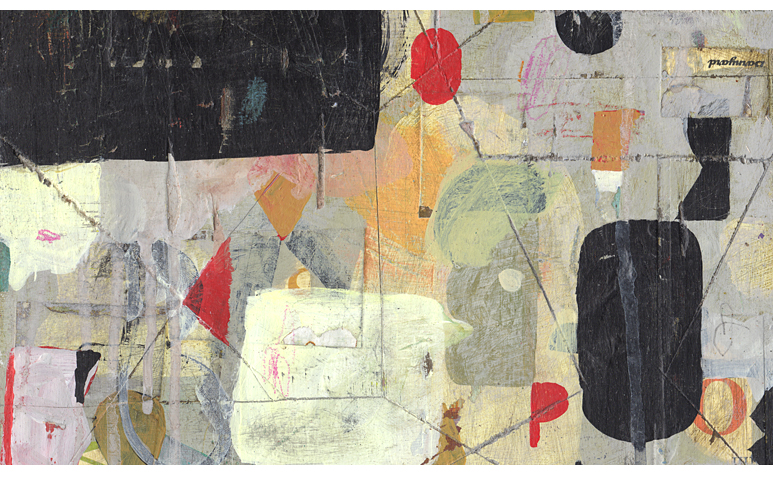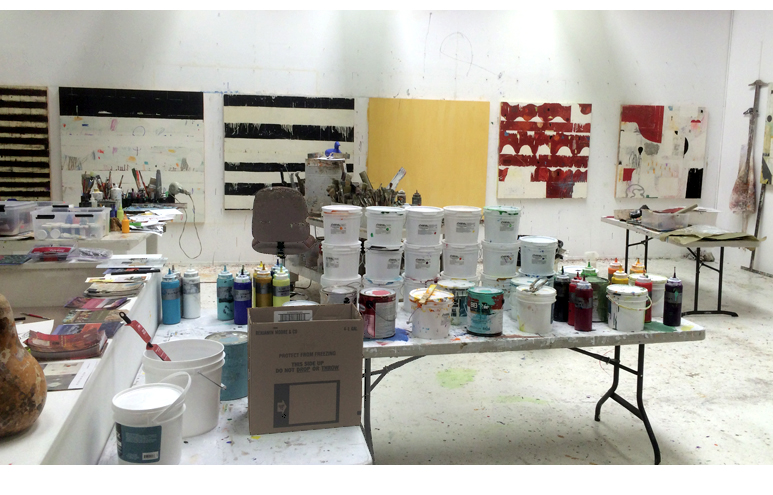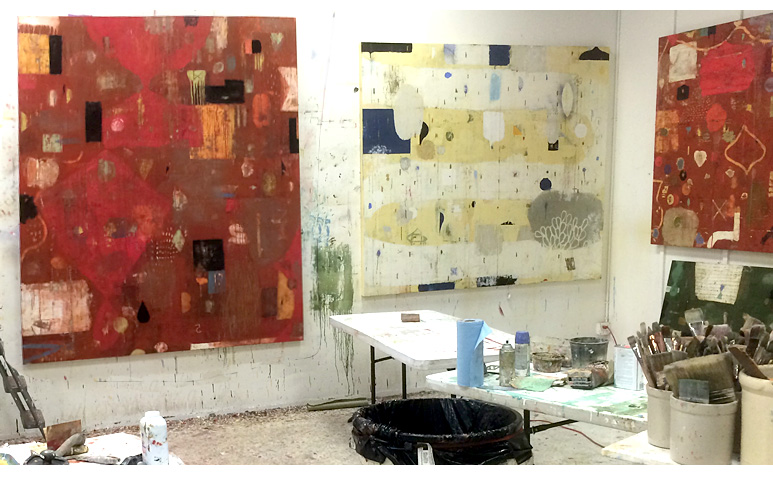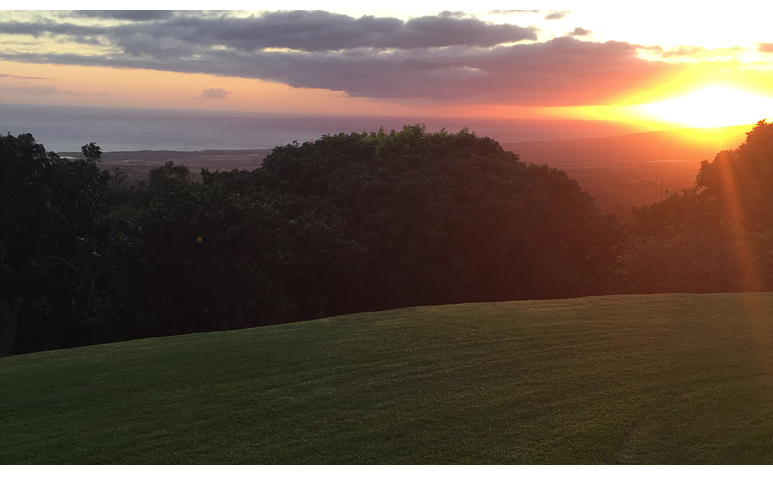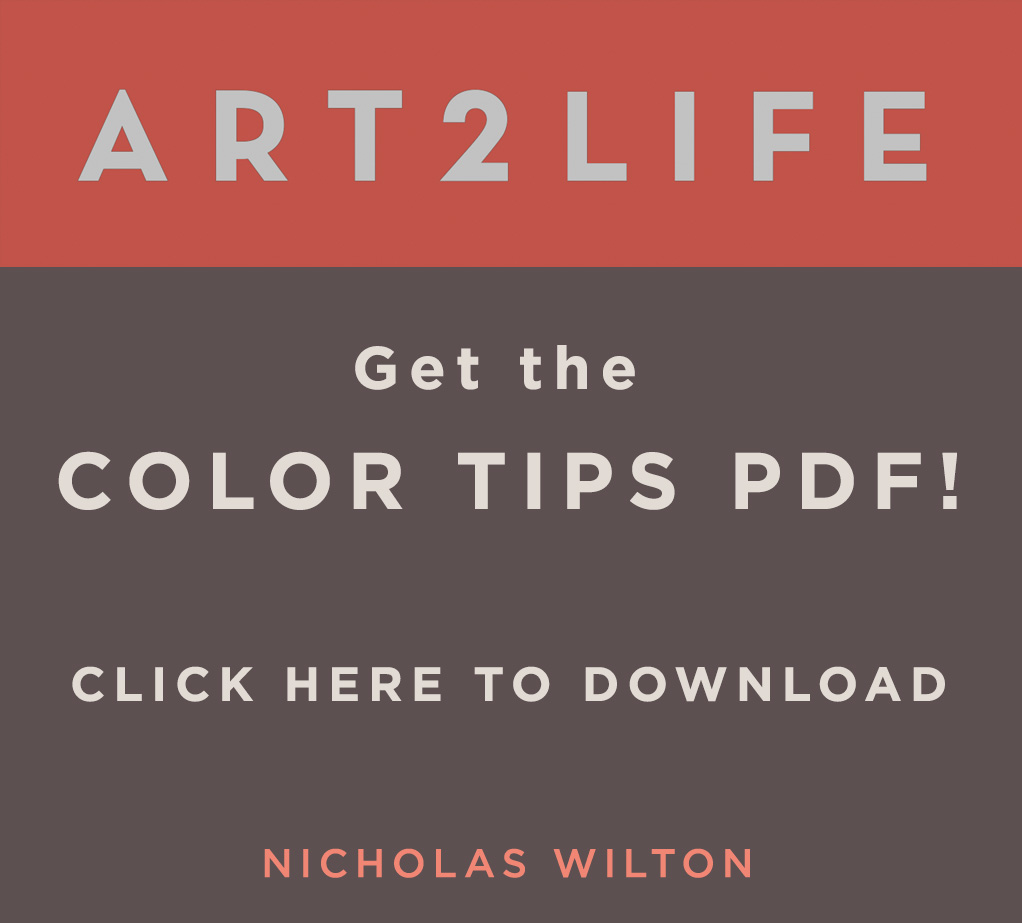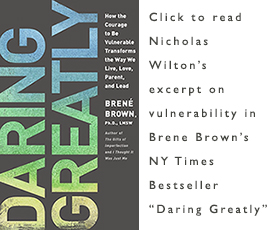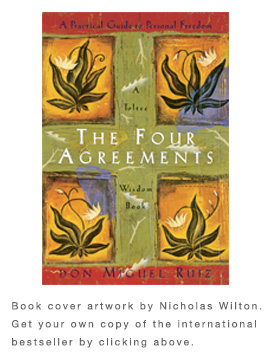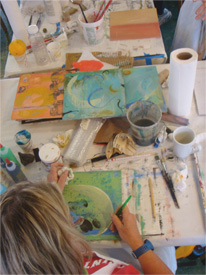Help Yourself and Teach
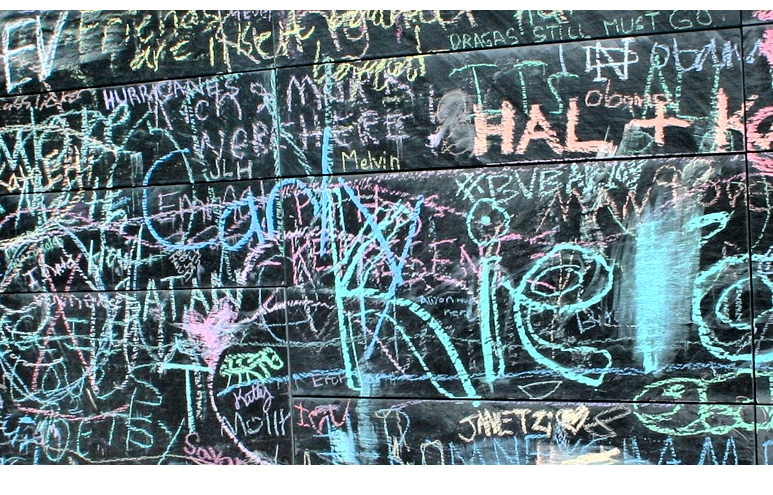 I thought I had to have everything figured out before I could teach. I thought I had to be an expert, so I waited a long time before I started teaching. I wish I hadn’t.
I thought I had to have everything figured out before I could teach. I thought I had to be an expert, so I waited a long time before I started teaching. I wish I hadn’t.
There are some great reasons to teach especially if you are creative. Here are the top 3 reasons why you might give teaching a try.
It helps you.
That’s right. After every workshop I teach I can always look forward to coming back to the studio and being super clear about what I am doing. Spending time articulating to students over and over again how to improve their art, rubs off on you. When you go back to your own art, things just seem easier. By saying what needs to be done so much, when it comes time for you to finally make your art it just flows.
It helps them.
It always is a great day when you hear from someone who, months after taking a class of yours, has become fired up again about their art. Sometimes I have even had people switch their careers once they find out that art making is an option for them. I have seriously converted 3 lawyers and I am now working on my fourth! Inspiring people is a totally worthwhile thing to try to do. It simply feels great. For you and them.
You are ready.
If you were like me who thought I had to be so advanced, so totally together to teach, then listen carefully. You don’t. All you need to be is just a little further down the road than the people you are helping. There are tons of artists that are further along than you but I bet there are way more behind you. And those are the people who would love to be shown some easier ways around things that you have already overcome. Sometimes we forget just how far we have come. You are eligible.
I find that teaching is the perfect complement to working in a studio alone. Teaching a group is the opposite of working quietly alone and when you put those two together in your life it just works beautifully…
So give it a try. Start small. Take one thing, one part of art making you really love and offer a class. Think of one thing you now know that made all the difference in the world to you…this could be the thing you could teach others.
You might be surprised how gratifying it is to teach. It certainly has been for me.
What is that one thing that you recently learned that has really helped you? Could you teach this?
Run Out of Creativity? This Will Help.
We all have those moments where we feel stuck and depleted. The creative juice is just not there.
This Question Changes Everything
I became somewhat obsessed with this question early on and have been asking myself the same one for my entire life. In my current job of mentoring artists, I now help others find their own answers to this very same question. It is not necessary to even know the full answer but it is imperative to consistently ask yourself,
What inspires you?
It has occurred to me that when you become involved with this question, over time, you get better and better at answering it. The answers change with the passage of time. They become more personal and distinct the more times you think about it. Each time you ask the better the answer becomes.
For many of us this might be the most important question of our lives. It is for me. Every time it is asked, every time we allow ourselves to realign our lives to the answer, our capacity for generating more meaningful art increases.
Moving towards the fire – those things in our life that inspire us and bring us alive – generates creativity. It took me a long time to understand that out of inspiration, doing all manner of things you love, comes creativity. If you are an artist and rely on creativity like me, then it becomes imperative to protect, to nurture all things that inspire you.
I am not just talking about art. I am talking about that yoga class, seeking out and seeing those friends who light you up, taking time in your day to walk in the woods, going to see new kinds of art, taking a workshop to learn something new or just diving into a new world of a book you have wanted to read but just never found the time. It is, of course, different for everyone. It is the practice of discernment. Choosing the big YES! over the small yes or, even worse, the plain and resigned, ok.
It is important to answer the question accurately because often the culmination of the answers and decisions based on this question manifest in what we create, what ends up in our lives. It could be a new business idea, a new relationship, a painting, a novel, a song, a career change or any other countless possibilities. In short, the decisions, the choices derived can either bring us alive or hold us where we have been. We want the former, especially if you are an artist.
We just simply must get it right. Our creative lives depend upon it.
Thankfully, as artists we actually get a lot of practice asking this very important question. The very process of making art is literally thousands (actually, millions) of yes and no decisions based solely on what feels right to you.
In an art process it is all about compromising less and less, eliminating the unfulfilling parts so that eventually what remains is something incredibly potent and meaningful to you. Your art is simply one of your answers made visible.
Our art, therefore, can stand as our personal reminder, a single placeholder of what truly matters to us at that moment. It resides within the bigger context of our art making, a practice that we can return to again and again to try to better answer that essential question: What inspires me?
I am curious. What inspires you?
The End Is Found By The Beginning
Sometimes one of the hardest things about art making is figuring out how to make your next brush stroke, or line, or mark, as good as possible. This can be difficult to do especially when you are feeling unsure or self-conscience; that feeling then bleeds into the mark, and it simply doesn’t look good.
There is, however, a way to consistently make strong, authentic marks. It takes a bit of practice, of course, but at its core the secret involves learning how to let go…
Click the image above to watch the video, and let me know what you think. How do you stay involved in your practice? How do you make your best marks?
In gratitude, Nicholas
Your Best Art Can Be The Easiest
Do you know how sometimes make something that is so good that it even surprises you? It seemed so effortless, and till this day you still kind of wonder how you made it? It is that good.
I have often wondered why I can’t do this more often. I discovered it has to do with my thinking…
Sometimes in making my Art I am overly concerned with results. This usually happens after an absence, when I have not been making art for a week or two. I keep thinking about how it is going to turn out. This mindset doesn’t ever produce my best work. When I am too focused on the outcome, I am simply not present. And then I am no longer able to fully experience the small miraculous thing unfolding in front of me. If my decisions are not based upon what is happening presently, then they cannot possibly all work together to make a cohesive whole in the future.
At some point – usually day two or three – I remember that it is more about enjoying the moment and paying attention to what is happening now, that oddly results in my best work.
Now I no longer wait so long to get back to this understanding. I simply have changed my process.
Quantity over Quality
For me, the way to quickly come back to this understanding is through quantity, not quality. I just start back in doing 5-10 paintings, instead of just one, all at once. This is almost more than I can possibly handle. But this is a good thing. If I can’t possibly understand entirely what I am doing in the present, then having a clear understanding of the future or clinging to an outcome is next to impossible.
In other words, when you are trying to control everything, at least for me, it just kills my art. However, when there are just too many balls in the air to control everything, intuition, spontaneity, and just plain fun creep back into my process. Once I am re-engaged in this way, then and only then can strong work become possible.
My best work oddly feels like I made it without caring. It just kind of happened by accident while I was playing with art materials. And in fact it was…
Art, like life, teaches me again and again that all possibility, all things worthwhile are available if I just can let go and surrender, happily to the present.
It seems to good to be true. But I think it is.
How to Make Your Art Practice Bulletproof
I was talking with a couple artist friends and one of them started talking about his work – he wasn’t selling a ton of it, and it was started to affect his art practice. Simply put, he wasn’t enjoying making the art as much as he used to.
External forces – things that are outside our control – can really affect our ability to create, so it’s important to make your practice as bulletproof as possible. Here’s how I do it….
How do you stay engaged in your work?
In gratitude, Nicholas
How to Make your Art Bigger
So how do you make your work hold up when it gets super big? I mean really big, like 8-10 ft. big. At that scale – or actually any time your work gets bigger than yourself – it can either fall down or be stupendous. Scale makes everything better or worse. I am asked frequently how to scale up work effectively by my students. I have written about this before, but since then, I think I have had some more clarification that has come from my own struggles with this issue.
Here are three points I keep in mind when I am making my art big.
#1 MAKE THE CLOSE UP VIEW AS STRONG AS THE DISTANT VIEW
When making art that is bigger than yourself, it is important that the art looks exciting, not just from close up, but also from across the room. Sometimes when our art is large, we stand right up close and get lost in all its detail. However, from a distance the viewer can’t see these subtleties. If it doesn’t look interesting from a distance then no one will spend the time walking across the room to look at it.
A strong work of art needs amazing detail, subtlety (I call this the quiet conversation) juxtaposed with bold, loud composition created by relative big differences in value contrast which makes it possible to see clearly from far away (loud conversation.) Both conversations need to be equally strong, however the former has slight differences in value and in the latter, big differences. Value, which is the degree of lightness or darkness of something, is primarily what controls these two conversations.
I like to think of how my art would look to someone driving by a gallery in a car traveling at 25 mph. If, in that one second, the loud conversation is compelling, then and only then will the driver pull over and come into the gallery to have a look at my work.
#2 SCALE UP YOUR TOOLS AND MARKS
When the work gets bigger, then so should the tools used to make that work. Imagine a 1” brush being used on a 12” square painting. The brush relative to the size of the art is quite large. Now if you make that 12” square painting 72” x 72” square, it has grown in scale 36 times! Taking a brush only slightly bigger, say 2”, will in no way be enough to generate a similarly powerful brushy feeling of the 12” painting. Basically, going larger with your tools will help you scale up the feeling you achieved in the smaller work.
Also, what might be a bold gesture, done with a twist of the wrist on a smaller work might not be enough once the work becomes larger. Your emotion and the physical movement of mark making will have to also grow in scale to pull off larger work. Larger tools will help you achieve larger work. And remember that to lose control and to invite spontaneity into a large work of art you must really embrace it to be noticeable.
In other words, practicing out of control in a corner that no one will notice isn’t really losing control. You know what I mean…I do this too. We need to step it up in a major way, in all ways, to pull off big scale.
#3 IMAGINE YOUR ART’S BOUNDARIES ARE BIGGER
When working on your Art, especially something at scale, it is important that you push yourself to think beyond the confines of the edges of your actual Art. Imagine that your art is merely a window into something bigger. Imagine you are creating a cropping of something that is bigger as you work. A shape that is made while worrying about the actual boundary of the art will feel small and self-conscious compared to one that can disregard the physical edges of the Art.
Imagine while you are working on your art that there is 12”or even 20” of border beyond the canvas. This is there for you to consider as well; it can be a runway for mark making to begin or end that will cross over or out of the actual art you are making. If you can play, work, like there are no boundaries, your art will feel more expansive. Sometimes I even let my brush paint on the actual studio wall outside the borders of the canvas.
Be expansive in all ways so that your art will not just look large but will feel large as well. It needs to be both.
Keeping these points in mind as you scale up really helps me.
What ways or thoughts do you use to make your Art bigger? Please comment below.
In gratitude, Nicholas
Improve Your Art by Not Trying
I was working on this painting in my studio yesterday and it reminded me about the importance of being not only in, but also out of control.
Pairing deliberate brushstrokes along with less controlled, more intuitive marks provides a freshness and an authenticity that can strengthen your art.
Do you find yourself to be more in or out of control in your art? I’d love to know….
In gratitude, Nicholas
15 Positive Ideas that can Help your Art Practice – Part Two
Thank you for your comments and your interest last week when I posted the first eight of fifteen positive ideas that can help your art practice. These 15 ideas are what I have used to stay buoyant in my own art practice, especially when things have felt hard. I am teaching a workshop on the island of Molokai right now and once again I see how important it is for artists, especially for those of us who are not so far along, to be reminded of the positive aspects of walking a creative path. These points, when even slightly embraced can dramatically shift, not just your outlook, but also your art and then ultimately your life. Here then are the remaining eight…
9 Intuition often leads the way in the artist’s journey. It is trusted.
10 Artists do not work for galleries or agents. They work for themselves. Some artists choose to work with galleries and agents in partnership.
11 Making Art is vitally important in the world today. It is one of the most prestigious, courageous endeavors a person can undertake in a life. Period.
12 Great success and notoriety is available today for artists because they can directly reach 30 million people for the price of an Internet connection. It is an amazing time in history to be an artist.
13 Community is essential. The influence and the support of like-minded people dramatically increase the likelihood of making of great art and realizing your dreams.
14 Everyone wants to feel more alive. Art that is new and different provides this feeling. You are totally and utterly unique. If your art reflects this fact, then it too will be desired.
15 Some of the most essential people in the artist’s life are those that support and follow the creative path the artist has chosen to walk.
I know for many of you these are familiar but possibly there are a couple in here that are not. I especially resonate with number 14. In all my many years of teaching this simple idea has shown me over and over again how making amazing art is available to anyone who is interested in making art. Talent, it turns out, has nothing to do with it. Ultimately we are all unique and that, more than anything, is what counts.
This list wasn’t totally compiled by me. It comes from an ongoing collaboration with other artists like you. Any thoughts or positive ideas that are helpful for you in your art practice would be super great to hear.
Hope your art is going well…. I am teaching all week which for me is super inspiring but it does make me really, really look forward to making my own art next week when I return.
In gratitude, Nicholas
PS Just in case you missed last weeks 8 positive idea, post click here.
How to Know When Your Art is Done
Hey here is a little information on an angle I use to tell if my art is finished or not. Works every time. Maybe it could work for you too.
If you have comments or questions let me know…
Nicholas
